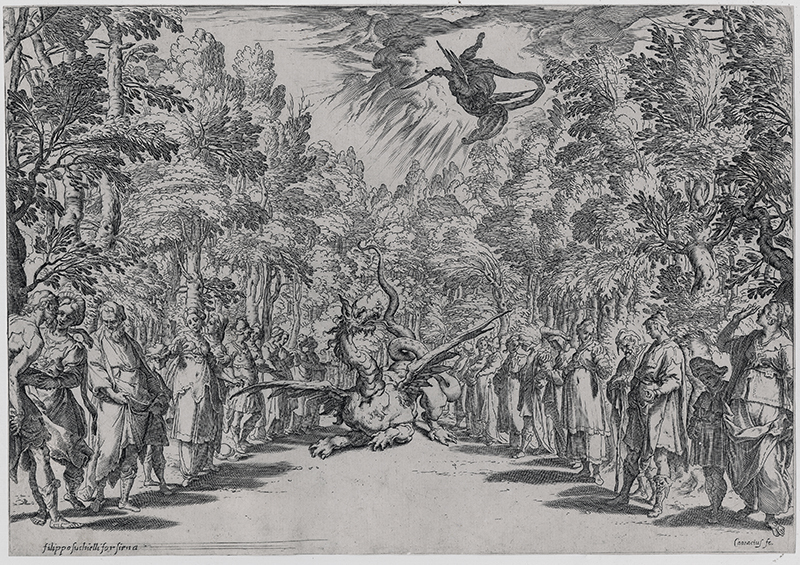
19th, 20th & 21st Century Fine Prints
707-546-7352 · fax 707-546-7924 · web: www.annexgalleries.com · email: artannex@aol.com
Apollo and the Python,(after Bernardo Buontalenti) by Agostino Carracci

Apollo and the Python,(after Bernardo Buontalenti)
Agostino Carracci
Apollo and the Python,(after Bernardo Buontalenti)
"Apollo and the Python", after Bernardo Buontalenti's stage design for the third intermezzo of the festivities for the marriage of Ferdinando I de' Medici and Christine of Lorraine, engraved and etched by Agostino Carracci in the late 16th century. The drawing for the print is in the Victoria and Albert Museum, London (inv.no. E 1188-1931).
This etching was done by Agostino Carracci after a drawing by stage designer Bernardo Buontalenti (1531-1608). It is a reverse image of the drawing.
According to the Victoria and Albert museum, which owns the original drawing: “It depicts the setting of the combat between Apollo and the Python in a woodland clearing on the island of Delos. It is an early moment in the intermezzo, the giant fire-breathing dragon stands in the center before his charred cave, threatening lines of standing Delphians who include children and an old man.…Subsequently a cardboard Apollo descended from heaven on a wire and then was replaced by an identically costumed living dancer who challenged the serpent to a battle and killed it, and performed a victory dance with the Delphic couples."
The intermezzo, in the Italian Renaissance, was a theatrical performance or spectacle with music and often dance, which was performed between the acts of a play to celebrate special occasions in Italian courts. It was one of the important predecessors to opera, and an influence on other forms like the English court masque."
Weddings in ruling families and similar state occasions were the usual occasion for the most lavish intermedi, in cities such as Florence and Ferrara. Some of the best documentation of intermedi comes from weddings in the Medici family, in particular the 1589 Medici wedding (between Christina of Lorraine and Ferdinando I de' Medici, Grand Duke of Tuscany), which featured what was undoubtedly both the most spectacular set of intermedi, and the best known, thanks to no fewer than 18 contemporary published festival books and sets of prints that were financed by the Grand Duke.
